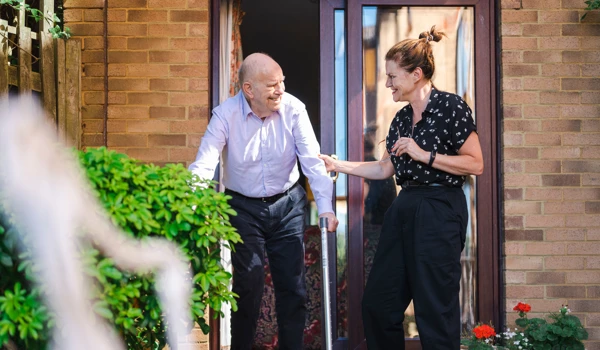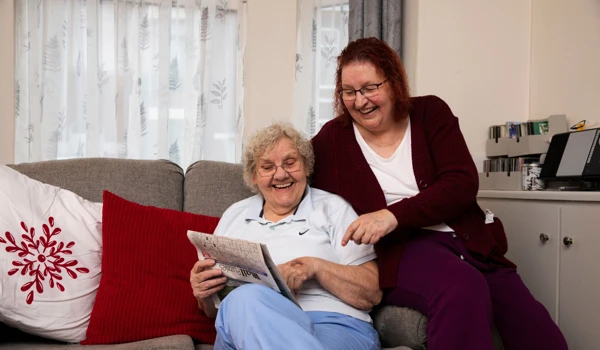Finding the right fit for your later years: Independent Living vs Sheltered Housing
Planning where you’ll live in later life is an important step, and when choosing a retirement home many older people choose between independent living or sheltered housing. Both provide supportive housing but cater to different levels of independence and needs. This guide explores the key differences to help you make an informed decision for yourself or a loved one.
What is independent living?
Independent living is housing designed for older people, usually 55+, who want to maintain their independence but also want to live in a home that offers support. Independent living offers private apartments or bungalows where residents manage their daily activities but have access to help if they need it. They often have safety measures such as grab bars and an emergency call system for peace of mind. Many independent living communities offer amenities such as a restaurant and social activities.
Who should consider independent living?
Independent living is an ideal option for older people who are active and wish to maintain their independence, as well as managing daily tasks such as cooking and medication management.
Key features of independent living for older people
· Private living spaces: imagine your own apartment, complete with a bedroom, living area, and kitchen. Independent living offers just that, with additional features such as grab bars and emergency call system for extra peace of mind.
· Active and social communities: Many independent living facilities come with gyms, restaurants, and communal dining areas, libraries, and even social clubs. These amenities help to keep residents engaged and create a sense of community.
· Freedom and choice: Independent living puts you in charge. You set your own schedules and routines, with the privacy of your own apartment and the freedom to come and go as you please.
· Support on hand when you need it: Independent living doesn’t mean going it alone. Optional services such as housekeeping, laundry and maintenance are available to help make daily life easier, allowing you to focus on what matters most.
· Focus on wellbeing: Independent living is designed for older people who can manage daily tasks such as managing medication, cooking and personal care. This allows residents to maintain their independence whilst enjoying the benefits of having support on hand when needed.
· Varied costs: The cost of independent living depends on factors such as location, size of the unit, and the amenities offered. Some independent living communities offer units for purchase, whilst others have leasehold options.
What is sheltered housing?
Sheltered housing, sometimes called assisted living or supported housing, is a type of accommodation designed for older people who want to live independently but with some added support and security. Sheltered housing usually consists of self-contained flats or rooms as part of a house.
Who should consider sheltered housing?
Sheltered housing is ideal for older people who can mostly live independently, but might need occasional support, but do not need the full range of services provided in a nursing or care home. It’s a good option for people who are looking to downsize from a larger home, or find maintaining their current home challenging.
Key features of sheltered housing for older people
Support with Daily Living: Sheltered housing offers a supportive environment for older adults who may require some assistance with daily activities. Residents have private flats or rooms within a larger building and share common areas like dining rooms and gardens, fostering a sense of community. Meals, housekeeping, and laundry services are often included, freeing up time for you to enjoy other aspects of life.
Safety and Socialisation: Sheltered housing prioritises resident wellbeing with features like emergency call systems and on-site staff. Social activities and events help combat loneliness and provide opportunities to connect with others. Some schemes even coordinate healthcare services like GP visits or podiatry, ensuring convenient access to necessary medical care.
Flexibility for the Future: A key benefit of sheltered housing is its adaptability. As your needs change, you can adjust the level of care you receive. Many residents have the option to hire additional carers if needed, potentially reducing the need to move again.
Choosing the Right Option:
Both independent living and sheltered housing offer a secure and supportive environment, but the level of assistance provided differs. Here's a quick comparison to help you decide:

Next steps

Care Home or Sheltered Housing?
As one of the UK’s longest serving providers of retirement housing, we often hear that people looking for accommodation as they get older don’t always understand the difference between a care home and sheltered housing.

Sheltered Housing Advice: For older people and their families
If you've thought about moving into a retirement home, but are worried about losing your independence, we talk you through all the reasons why sheltered housing might be a good option, answering questions you might have.

Weighing up the benefits of renting or buying a retirement home
There are several benefits of living in a retirement property. If you are thinking about renting or buying a retirement home, we discuss the benefits of each in this guide.
